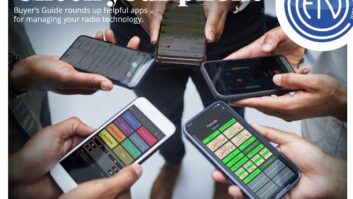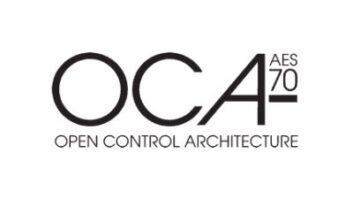IBOC Update – Jul 7, 2004
Jul 7, 2004 9:00 AM, By Mark Krieger, CBT

Stay up to date on the latest IBOC news, business and technology information with the twice-monthly newsletter from Radio magazine.
Index:
- CPB Announces Next Round of Digital Radio Conversion Grants
- Ibiquity Validates SRS Labs’ Circle Surround Technology
- Broadcast Electronics to Offer HD Radio Seminar at NAB Radio Show
- IBOC by State: Washington
- Replies to FCC’s FNPRM Reach High-water Mark
- Voice of Russia Marks DRM Launch, Expansion Plans
- An Introduction to the New Language Surrounding HD Radio
- Sony announces DAB Receiver for European Market
To receive these articles twice a month in your e-mail, subscribe to the IBOC Update – Insight on HD Radio e-newsletter. Click here to subscribe.
NewsCPB Announces Next Round of Digital Radio Conversion Grants
The Corporation of Public Broadcasting (CPB) has announced the opening of its latest round of Digital Radio Conversion Fund grants. The grants provide matching funds for digital conversion projects exclusively for qualified public radio outlets nationwide.The deadline for the current round of applications is Aug. 27, 2004.The CPB has earmarked approximately $15 million for digital radio conversion grants for its fiscal year 2004.Technology/ApplicationsIbiquity Validates SRS Labs’ Circle Surround Technology
SRS and Ibiquity Digital have completed the joint testing of SRS Circle Surround (CS) technology as a compatible format for use with Ibiquity’s HD Radio broadcast architecture. Company spokesmen said that CS technology will allow FM radio stations nationwide to deliver digital quality surround sound content to listeners through their IBOC digitally equipped home theater systems or car audio entertainment units. The announcement marks the completion of a joint testing program announced in January 2004 at the International Consumer Electronics Show (CES) as part of the two company’s strategic technology partnership.Implementation of CS encoding with the HD Radio platform allows radio stations to encode any multi-channel content into two-channel output for broadcast over the HD Radio system, which could then be decoded into full-bandwidth surround sound with any decoder found in home theater and automotive systems. A 6.1-channel surround sound experience could be realized with CS II decoders deployed in a variety of home theater products from Kenwood, Marantz, Accuphase and Theta Digital. For those listening to HD Radio receivers in their cars, Circle Surround Automotive technology also offers a CS decoder along with several enhancements designed to overcome the challenges of speaker placement and other obstacles specific to surround sound in an automotive environment.Mike Lyons, Vice President, Aftermarket Business Development for Ibiquity Digital said, “We are extremely pleased that SRS has proven Circle Surround sound compatibility with Ibiquity’s HD Radio system. We feel that SRS Labs’ surround sound technology will accelerate the growth and adoption of the HD Radio system across the country and we encourage our broadcast and consumer electronics partners to realize how powerful Circle Surround can be for radio.”While it is not the only format available for surround sound over HD Radio, CS encoding claims to be 100 percent compatible with mono and stereo. According to SRS, the CS encoding system accepts any multi-channel source, encodes it to a two-channel output, which may then be transmitted over any existing stereo analog or digital broadcasting infrastructure, such as HD Radio IBOC digital hybrid transmission. The CS-encoded two-channel signal can be decoded back into 5.1 or 6.1 surround sound by any multi-channel consumer system that includes a matrix decoder, such as Circle Surround or Dolby Pro Logic.Broadcast Electronics to Offer HD Radio Seminar at NAB Radio Show
Broadcasters eager to learn more about the advances in IBOC digital radio will get another chance this fall, as Broadcast Electronics brings its HD Radio seminar to San Diego, CA, on Oct. 6, in conjunction with the NAB Radio Show.The seminar is the latest of more than 35 Broadcast Electronics-sponsored national seminars started two years ago to focus on the developing technology of HD Radio.Topics to be discussed include the advantages of generating the HD signal in the studio along with new ways of delivering it. In addition to IBOC digital developments, the BE seminar will cover transmission technologies, installation and integration, antenna technologies and field reports.The seminar is free to all broadcasters and will be held at the Embassy Suites Hotel Downtown, 601 Pacific Highway, from 1 p.m. to 3 p.m. on Oct. 6. Reservations can be made by e-mail to [email protected].IBOC Across AmericaIBOC by State: Washington
Ibiquity has a list of stations that have licensed HD Radio technology and notes those that are on the air now. IBOC by State will look at various states and list the stations that are making the transition.StationFormatCityOwnerOn Air? KFMY-FM 97.7Classic HitsOlympiaSouth Sound BroadcastingNo KAYO-FM 99.3CountrySeattle-TacomaSouth Sound BroadcastingNo KBKS-FM 106.1ACSeattle-TacomaInfinity BroadcastingYes KBSG-FM 97.3OldiesSeattle-TacomaEntercom CommunicationsYes KING-FM 98.1ClassicalSeattle-TacomaClassic RadioNo KISW-FM 99.9RockSeattle-TacomaEntercom CommunicationsYes KMTT-FM 103.7Adult RockSeattle-TacomaEntercom CommunicationsYes KNDD-FM 107.7AlternativeSeattle-TacomaEntercom CommunicationsNo KPLU-FM 88.5JazzSeattle-TacomaPacific Lutheran UniversityNo KQBZ-FM 100.7TalkSeattle-TacomaEntercom CommunicationsNo KUOW-FM 94.9News/InfoSeattle-TacomaUniversity of WashingtonYesFCC UpdateReplies to FCC’s FNPRM Reach High-water Mark
Washington – What had been a steady stream of responses to the FCC’s request for comments on its April 15 Final Notice of Proposed Rulemaking (FNPRM) on IBOC digital broadcasting became a flood as a July 15 filing deadline for responses draws close. Following the NAB’s lead a few weeks ago, scores of state broadcast associations and public broadcasting groups joined with industry giants like Clear Channel, Infinity, Cox, and Entercom in an effort to inform the FCC’s approach to codifying IBOC digital broadcast operation in the US.While a variety of agendas were presented to the Commission, several central themes continue to develop. A view expressed with near unanimity is that new rules governing IBOC be as limited as possible, in order to allow IBOC technology to develop and evolve in an innovative fashion. Likewise, almost all respondents ask that broadcasters be permitted to partition their digital bandwidth as they see fit. This would allow FM IBOC digital hybrid stations to multicast with secondary audio channels (SACs) and data streams, with market forces acting as the ultimate arbitrators of audio bit-rate/quality. Most commenters also expressed a desire to be permitted to lease SACs and data streams in the same way analog FM’s currently lease their SCA channels.By far, the most contentious issue to emerge from filings revolves around nighttime operation of AM IBOC digital transmissions. While the NAB and 44 state broadcast associations continue to urge the FCC to permit 24 hour digital AM operation on a routine basis, several groups – most notably Clear Channel – request the implementation of a notification process. Such a process would require AM stations that wish to commence nighttime operation with an IBOC digital signal to notify in advance both the FCC and any co-channel or first-adjacent station that might be affected by the IBOC operation. This would allow stations subject to potential increase of interference to reply and document conditions prior to IBOC operation so that any interference increases might be dealt with in an expeditious fashion. Clear Channel went so far as to request the imposition of a mandatory 6dB reduction of digital carriers for any AM IBOC station causing increased interference during digital night operation until all affected parities agree to a mutually acceptable remediation plan.On balance, however, broadcasters and other interested parties seem to be largely in concert. Like the NAB’s itemized address of issues highlighted by the FCC in the FNPRM, most comments favor a flexible, hands-off approach to the continued role-out of digital radio. Few comments, for example, favored imposition of new public service programming requirements, while most concurred that issues like EAS could easily be accommodated within the scope of existing requirements. Most respondents also agreed that the Commission should move quickly on publishing new rules, in order to hasten adoption of the new technology by both broadcasters and consumers, thus helping radio to remain competitive in a rapidly evolving media environment.Eye on IBOCVoice of Russia Marks DRM Launch, Expansion Plans
A spokesman for Russian broadcaster Voice of Russia announced the successful commencement of DRM operation on both its MW and SW outlets at the quarterly meeting of the Digital Radio Mondiale (DRM) consortium, held in the Moscow headquarters of the Russian Television and Radio Network (RTRN) and Voice of Russia on June 16 to 18.Voice of Russia currently transmits DRM broadcasts in Russian, English, German and French toward Europe, using a short-wave transmitter in Taldom, Russia, and a medium-wave transmitter on 603kHz in Zehlendorf, Germany. The medium-wave transmitter, made by DRM member Telefunken, has been modified to operate in Single Channel Simulcast Mode, which means that Voice of Russia’s broadcasts can be sent in both analog and DRM formats.Voice of Russia also announced plans to expand its reach within and beyond Europe in the near future, using additional transmitters that have been adapted for DRM. This network includes a second short-wave transmitter operated by the Moscow Regional Centre, a short-wave transmitter in Irkutsk, a short-wave transmitter in Khabarovsk, and a T-Systems International medium-wave transmitter, built by Telefunken, in Wachenbrunn, Germany.”Now is the right time to introduce digital broadcasting standards in Russia,” said Voice of Russia Head Armen Oganisyan. “We have modified our existing transmitter network so that it has DRM capability, and we plan to expand the current broadcast schedule to serve even more listeners in the coming months. We are optimistic regarding future funding for further DRM development.”BBC World Service, a DRM member, currently sends DRM broadcasts short-wave into Russia on a daily basis. These Russian-language broadcasts are sent from Rampisham, England, using a transmitter operated by DRM member VT Communications.Last year, RTRN and Voice of Russia announced they had chosen DRM for their digital short-wave transmission pilot project. The project was authorized by Russia’s State Commission on Radio Frequencies on Dec. 1, 2003. Voice of Russia has been a DRM member since 1998.HD Radio TerminologyAn Introduction to the New Language Surrounding HD RadioBLER (block error rate): A ratio of the number of data blocks received with at least one un-correctable bit to the total number of blocks received.objective testing: Using test equipment to directly measure the performance of a system under test. For example, the power output of a transmitter can be objectively measured using a wattmeter.subjective testing: Using human subjects to judge the performance of a system. Subjective testing is especially useful when testing systems that include components such as perceptual audio coders. Traditional audio measurement techniques, such as signal-to-noise and distortion measurements, are often not compatible with way perceptual audio coders work and therefore cannot characterize their performance in a manner that can be compared with other coders, or with traditional analog systems.ProductsSony Announces DAB Receiver for European Market
Sony has announced that it will launch a digital radio intended for use with developing DAB networks in Europe and the United Kingdom.The standalone receiver/player, called the XDR-S1, contains its own 2.3W speaker across the front of the player and features line inputs and line outputs so other components can be connected.The XDR-S1 will support UK and European DAB frequencies as well as FM and AM signals, allowing users to take DAB with them on continental jaunts. The digital radio also offers 40 presets across the four different radio bands.The player is expected to retail for about US$360.To receive these articles twice a month in your e-mail, subscribe to the IBOC Update – Insight on HD Radio e-newsletter. Click here to subscribe.












